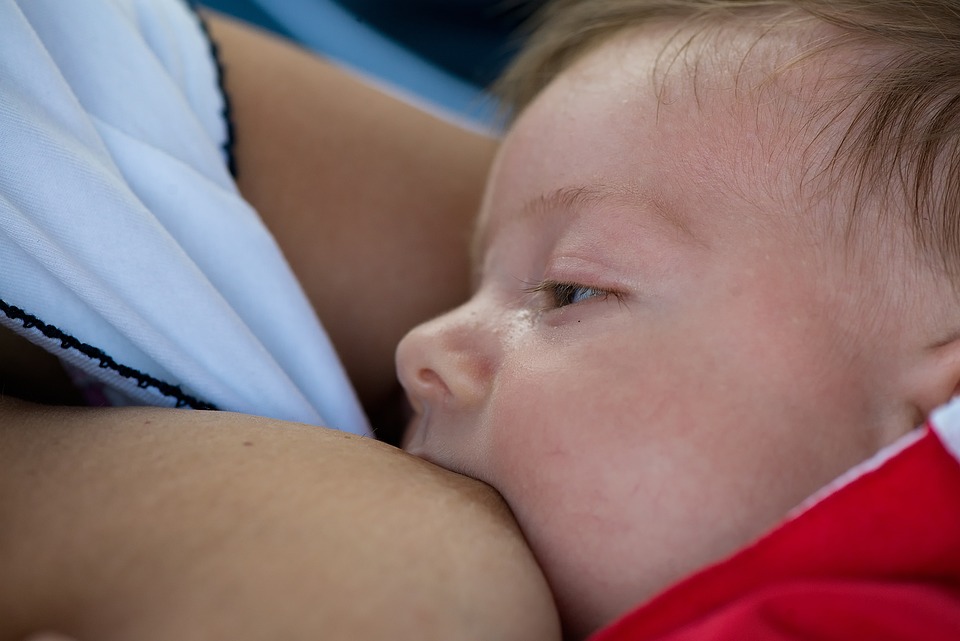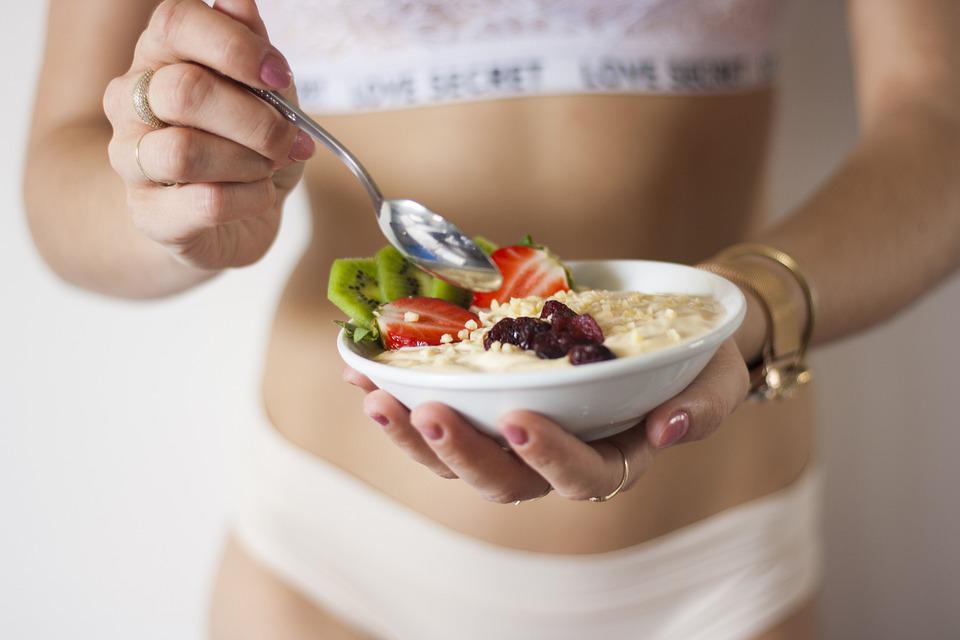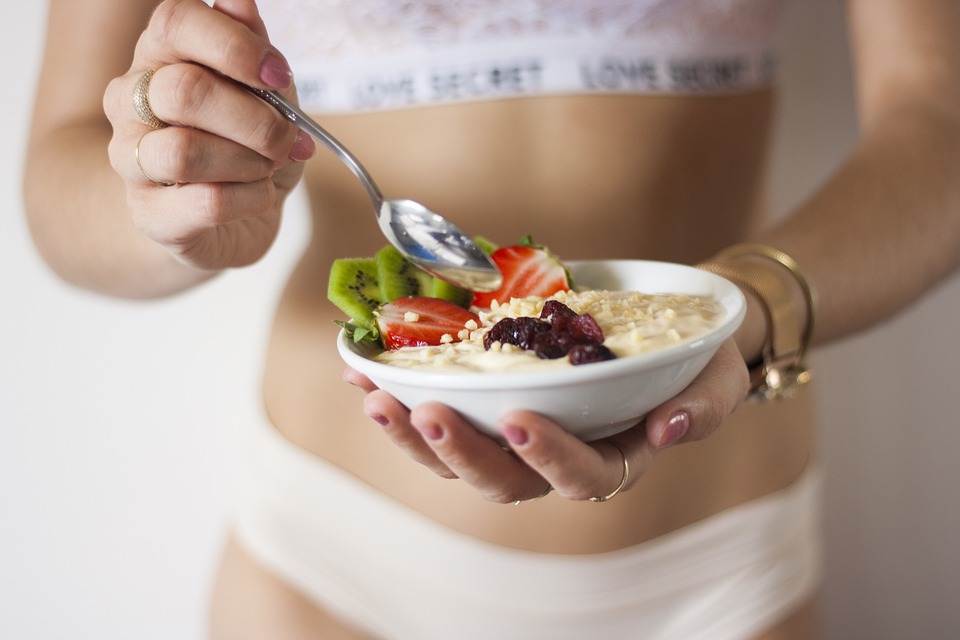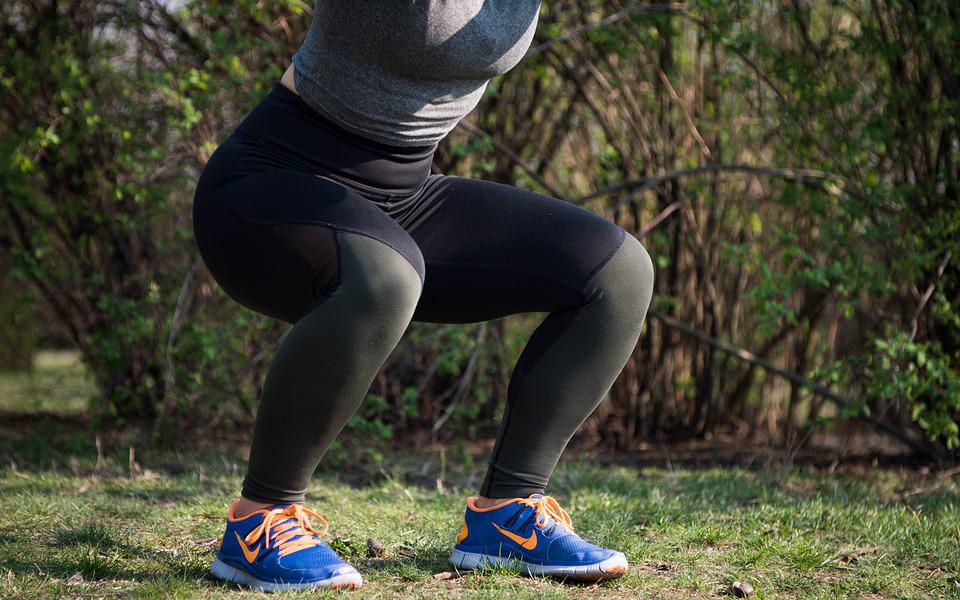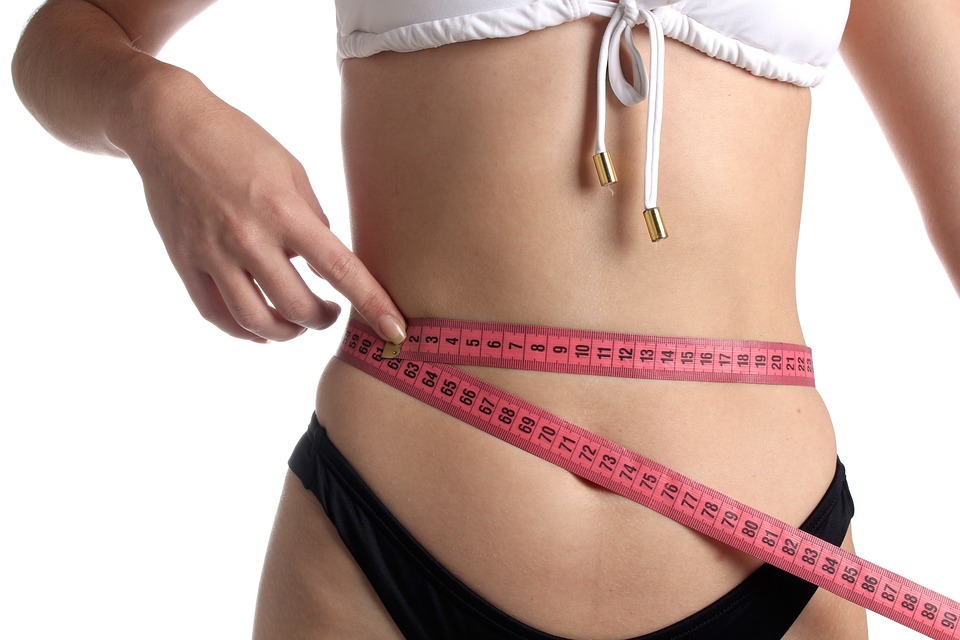
After childbirth, you’re likely longing for the things you did pre-baby, such as indulging in sushi, drinking wine, or being able to wear your favorite jeans again. Once you have had a baby, the possibilities for what you can eat increase, but keep in mind that shedding weight after the pregnancy will take some effort and it will not happen immediately; it must be remembered that the baby took nine or more months to be born. Allow your body to restore, acknowledge your incredible accomplishment, and have leniency as you commence a new stage of life. Experts provide an explanation of the best way to lose weight safely and healthily after giving birth.
Understand Your Nutritional Needs
Restricting your diet drastically to lose weight after having a baby is not the right approach, especially if you are breastfeeding. You must get sufficient nourishment to maintain your energy, steer clear of dietary deficiencies, and consume a mix of proteins, carbs, fat, vitamins, and minerals to provide your baby with the necessary quantity of breast milk.
Not every mom breastfeeds her baby, and that’s okay! If you plan on attempting to breastfeed, it is essential to make sure you are eating a balanced diet.
How Much Weight Do You Lose Right After Birth?
The ACOG suggests that expecting mothers who are in a healthy weight category should put on between 25 and 35 pounds during the pregnancy. You’ll lose some of this weight automatically after birth. Cynthia Flynn, MD, an ob-gyn from Florida working with JustAnswer, expresses that many women generally shed 10 to 15 pounds directly after giving birth, as a result of delivering their baby, the placenta and water weight. Although you may experience a bulge due to the fat that has accumulated, an increased uterus size, and stretched abdominal muscles, you will eventually return to your pre-pregnancy form after childbirth. It will take a few weeks for your uterus to return to its original size and your baby bump to reduce in size.
How Long Does Postpartum Weight Loss Take?
It is expected that some weight will be lost right after delivery, though the duration it takes to lose the rest of the baby weight can differ depending on the individual. Flynn suggested that it would take approximately one year or more for the gained pregnancy weight to be shed, depending on the weight acquired. She stated that many ladies usually experience a decrease of around half of the weight that was put on over the initial few months. It is possible to drop one pound per week during the initial stages, followed by losing roughly half a pound each week thereafter.
The length of time spent in postpartum recovery can vary widely depending on a number of things – for example, a person’s body type and metabolism, type of diet, amount of exercise, whether or not they are breastfeeding, the help and support they have, and the order of their pregnancy. Dr. Alan Lindemann, an obstetrician located in North Dakota, has stated that the more one has been pregnant, the more difficult it is to slim down after. He states that people are more likely to put on more weight with their second pregnancy. If you didn’t restore your original weight prior to your first pregnancy, the initial weight before your subsequent pregnancies will also be higher. Having multiple pregnancies means you are older each time and your metabolism decreases with age. Furthermore, having more children will make it difficult to get back in shape after giving birth, since you won’t have much time to focus on losing weight. Flynn remarks that it can be tricky to maintain healthy habits such as eating nutritiously and working out with several small children in the house.
How to Lose Weight After Pregnancy
Finding a regimen that suits you and the way you live is indispensable to slimming down following childbirth. As far as building healthy behavior goes, maintaining it is essential. Below, experts offer some tried-and-true postpartum weight loss tips. You need to modify these to suit your particular requirements, but it’s an excellent beginning.
Don’t skip meals
It is essential to make sure you eat enough food even if you are attempting to shed some post-pregnancy pounds. Flynn advises against taking part in any radical diets, like the ketogenic diet or skipping meals, as this could potentially cause harm to both you and the baby if you are nursing. Cutting calories could also reduce your milk supply. Nursing mothers ought to take in roughly 2,500 to 3,000 calories a day, recommending that they should have three substantial meals during the day with three smaller meals in between, Lindemann states. Bradford states that because producing milk needs more energy, the body crucially needs more calories to stay energized. It is not advisable to reduce your calorie intake in an attempt to lose weight.
If you are formula-feeding, you may need fewer calories every day, but sticking to a standard eating pattern is still necessary for your body’s healing from childbirth. Avoiding meals may not be as effective for weight loss after childbirth as some may believe. A 2021 study concluded that those who went without meals, particularly those who didn’t eat dinner, experienced a rise in weight of up to 10 percent. Why? Bradford states that when the body is not receiving the right amount of nutrition, it will reduce the amount of energy it produces and reduce the rate of metabolism, trying to retain fat.
Eat a balanced diet
Be consistent with your eating habits and make sure your meals are healthy and nutritious, (especially if you are breastfeeding!). This not only boosts your endurance, but also supplies folic acid, calcium, omega 3 fatty acids and other vital nutrients required for both you and your infant’s well-being. ACOG recommends focusing on the following major food groups:
- Protein: Protein helps repair your body’s muscles and tissue. It is present in chicken, seafood, beans, eggs, soya bean items, and dairy goods.
- You should opt for complex carbs in your diet, which can be sourced from high-fiber fruits and vegetables, as well as leafy grains and whole grains. These choices provide a greater amount of nutrients and fiber and break down more gradually than simple carbohydrates, promoting satiety for a longer period.
- Focus your diet on unsaturated fats which come from plants and vegetables, like almonds, olive oil and avocados, in addition to rich in fats fish. Eating meat and dairy products which contain saturated fat is acceptable, as long as they are eaten in a sensible quantity. Attempt to keep your distance from trans fats, which have been chemically altered.
When aiming for nutrition from different food categories, make sure to watch how much of those foods you are consuming. Occasionally having a sugary snack is alright, but Lindemann suggests cutting back on foods providing “useless calories”, like cookies, cake, soft drinks, and chips. Flynn suggests avoiding processed foods if you can and only drinking water, tea, or coffee.
Get into an exercise routine
When it comes to shedding pounds after giving birth, maintaining a healthy lifestyle that includes a nutritious diet and ample physical activity are essential. Regular physical activity can raise your metabolism (i.e. the amount of calories burned when at rest) and aid in shedding extra weight after childbirth. You should discuss with your obstetrician-gynecologist and get the go-ahead before doing any postnatal exercise, usually within 6-8 weeks after the birth however, keep in mind this time could vary depending on the type of delivery you had (for instance, a caesarean).
Once you’ve been given the okay by your doctor, be assured that exercise routines to get back to your pre-pregnancy body don’t have to be overwhelming. Lindemann suggests beginning with a walk and gradually increasing the distance. Think about if you’d like to incorporate exercising on an elliptical bike or swimming into your regime. Furthermore, Bradford highlights baby wearing as a great way to strengthen your core. How much physical activity do you need to do in order to shed pounds after giving birth? The American College of Obstetricians and Gynecologists suggests that postpartum women should participate in a minimum of 150 minutes of aerobic activity that has a moderate level of intensity each week. This can be broken down into either 30 minute sessions spread out over the course of 5 days or into 15 ten minute exercises done throughout the week. It doesn’t need to be strenuous, but it is important to keep up regular physical activity to reach your postpartum fat loss goal. Look for forms of exercise that are enjoyable and make them a part of your normal habits.
Workouts For Losing Weight After Pregnancy
No matter if you have given birth vaginally or through a c-section, it is wise to consult with your doctor before you begin exercising again. It’s important to let your body heal.
Once a physician approves of your exercise routine, start off slowly. Walking is a great place to start. A few other exercises that work well for weight loss after pregnancy include:
Plank Holds
Planks can aid in developing a slimmer waistline after having a baby, increasing the strength and shape of your abdominal muscles. Maintain a push-up stance for a span of one to two minutes, take a break, and do the plank again a minimum of two times.
For a more intense core exercise, alternate bringing one knee up to your chest while in a plank position.
Squat Jumps
You need to continuously jump up as high as possible while squatting down for a minimum of three sets, each containing 10 to 20 repetitions. Switch between squat jumps with your feet placed far apart and squat jumps with your feet positioned close together to mix it up, or try adding hand weights as additional load.
This exercise will quickly give your legs and butt a toned, tighter look.
Squat Kicks
Doing squat kicks at home can help you sculpt your thighs, booty, and core after giving birth, allowing you to stay in comfort! Squat down until your legs form a ninety-degree angle with the floor and then rise back up, extending one leg in front or to the side while lowering yourself. When standing again, kick out the opposite leg before returning to the squat position, then stand and extend the other leg.
Do squat kicks for a period of one minute, then take a break and do this exercise three to five times.
Burpees
You can do burpees at home to strengthen and shape your whole body!
Perform one push-up, then jump your feet towards your hands, leap up, come down for another push-up, and repeat this movement for around one minute at a time.
Elliptical Workouts
An elliptical trainer is an ideal way to perform a complete aerobic exercise routine for dropping pounds post-childbirth. Go to the gym or find an elliptical that can be used in your house that exercises your arms and legs.
If you weigh 155 pounds, you can expect to burn around 335 calories in a half an hour of using an elliptical machine.
Walking Uphill or Jogging
Exercising, such as walking or jogging, up an incline can be a great way to burn calories and get your body back to pre-baby shape. This can be done with a treadmill in the home, making frequent trips to the gym, or taking your child along in a jogging stroller. Running up a hill while pushing a baby jogger is an effective way to lose weight rapidly.
Target to do at least 30 minutes of aerobic activity on a daily basis. Start off by taking a walk and gradually include some jogging as you get fitter.
Cycling
Riding a bike is a great way to shape and firm your body, burn off calories, and shed any post-pregnancy weight.
Incorporate cycling into other cardio exercises to diversify your routine, or join a cycling class that can burn over 300 calories in 30 minutes.
Push-ups
If you are searching for a straightforward method to strengthen and firm up your arms, chest, upper back, and abs, incorporate push-ups into your daily fitness program.
Do at least three exercises with 10 to 20 repetitions of push-ups on a bi-daily basis in order to get the whole-body outcomes you merit.
Triceps Extensions
Wonderful results can be obtained for your upper arms by performing triceps extensions, thus firming and toning them after having a baby. Lift light hand-held weights (or a resistance band), and stretch your arms above your head so that they are in an upright position. Bend your arms and take the dumbbells back to behind your head, going as far as you can. Raise the weights or elastic band until your arms are almost completely extended again.
Do at least three sets of repetitions, each containing between 10 and 20 reps.
Leg Raises
Doing leg raises can work to firm your legs and abdominals, and help with shedding excess pounds from postpartum weight gain. Rest on your back with your legs outstretched in front of you. Maintain your legs rigid, lift them gradually until they form a right angle with the floor, then gradually lower them back down until they nearly reach the ground.
To make the exercise more challenging, you can put a stability ball in between your ankles or your knees while doing it.
Getting Started
Don’t be disheartened if you don’t see immediate results when trying to shed the pounds post-pregnancy; it’s normal for the process to take some time.
It is essential to make sure one’s daily nutritional needs are met, particularly when breastfeeding.
Being part of a structured weight loss plan created with women who have recently been pregnant will up your chances of shedding pounds. It gives you the encouragement you need to keep going for the long haul. You can do it!


